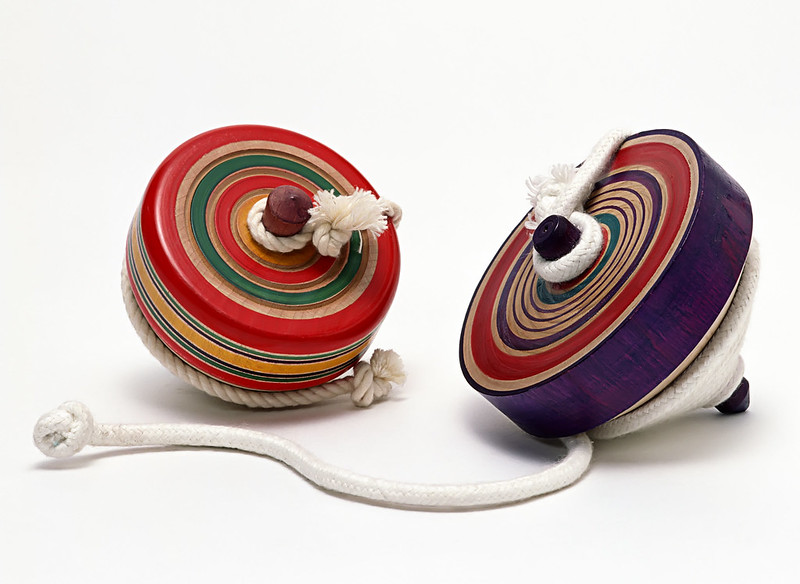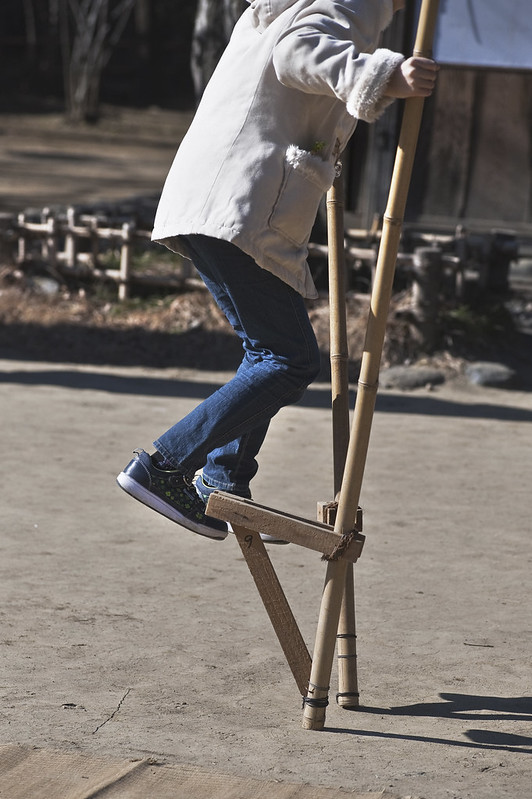
Traditional Japanese Toys
Each country has its own set of traditional toys. Many of Japan’s have a supernatural or religious origin– colorful Shinto and Buddhist stories and beliefs. Some traditional toys are still popular with both adults and children, even with the advent of modern toys.
Koma.
Some traditional toys
Koma, spinning tops, originated in China around a thousand years ago. They were hand-painted and made of wood, and could be spun by hand or with a string. During the Edo period, koma playing developed into a game of competition, with players trying to knock their opponent’s tops out of a ring. Japanese boys nowadays still love to play with koma, some of which have been designed to make sounds or spin faster.
Menko cards have been in existence since the 1700s and were initially made of dried mud or clay. In the late 1800s, thick cardboard became the standard medium for menko cards, cut into circular or rectangular shapes with images printed on them. Players battle each other in several ways. The most common goals are to flip open the opponent’s cards or to knock them out of a ring, similar to the concept of sumo wrestling. The images on these cards used to be crude since they were soon battered during gameplay. In recent years, more finely crafted, durable designs were printed. Although menkos are still being produced today, interest in playing them has waned with the rise in popularity of modern trading cards and electronic toys.
Tako or traditional Japanese kite.
Tako, Japanese kites, can be traced back to 649-794 A.D. during the Nara period, when Buddhist missionaries traveled from China to Japan and brought kites along with for religious events. In the 1600s (Edo period), Japan closed its doors to the outside world. During this time tako craftsmanship reached its pinnacle. Currently, there are 130 varying tako designs and shapes depending on the region. These are usually painted with Japanese characters taken from legends, myths, and religion.
Takos are still given as a gift to first-born sons. They fly them on Boys’ Day, May 5, and for festivals and celebrations. One of the most famous kite festivals is the Hamamatsu Festival where teams compete as their takos battle each other high in the air. Thousands of spectators gather to watch.
Takeuma.
Takeuma, Japanese stilts, are made of a pair of bamboo poles. Children playing with them would pretend they were riding a horse. They are no longer popular, but some Japanese schools still include them in their lessons to teach children better balance and coordination.



